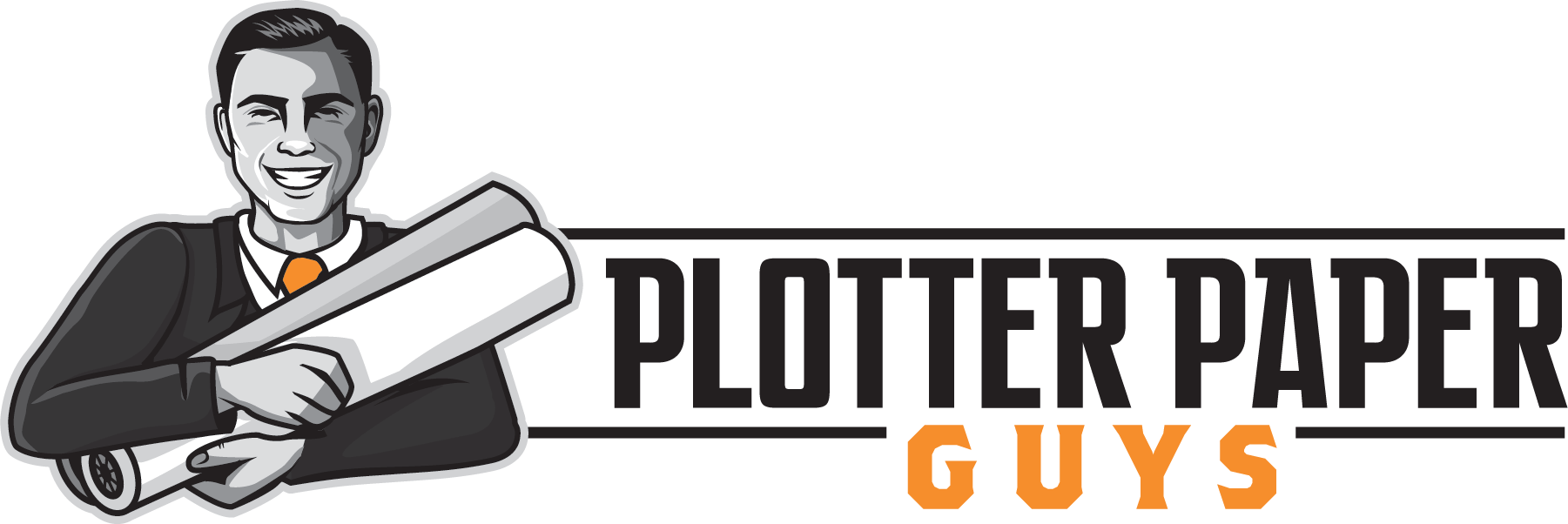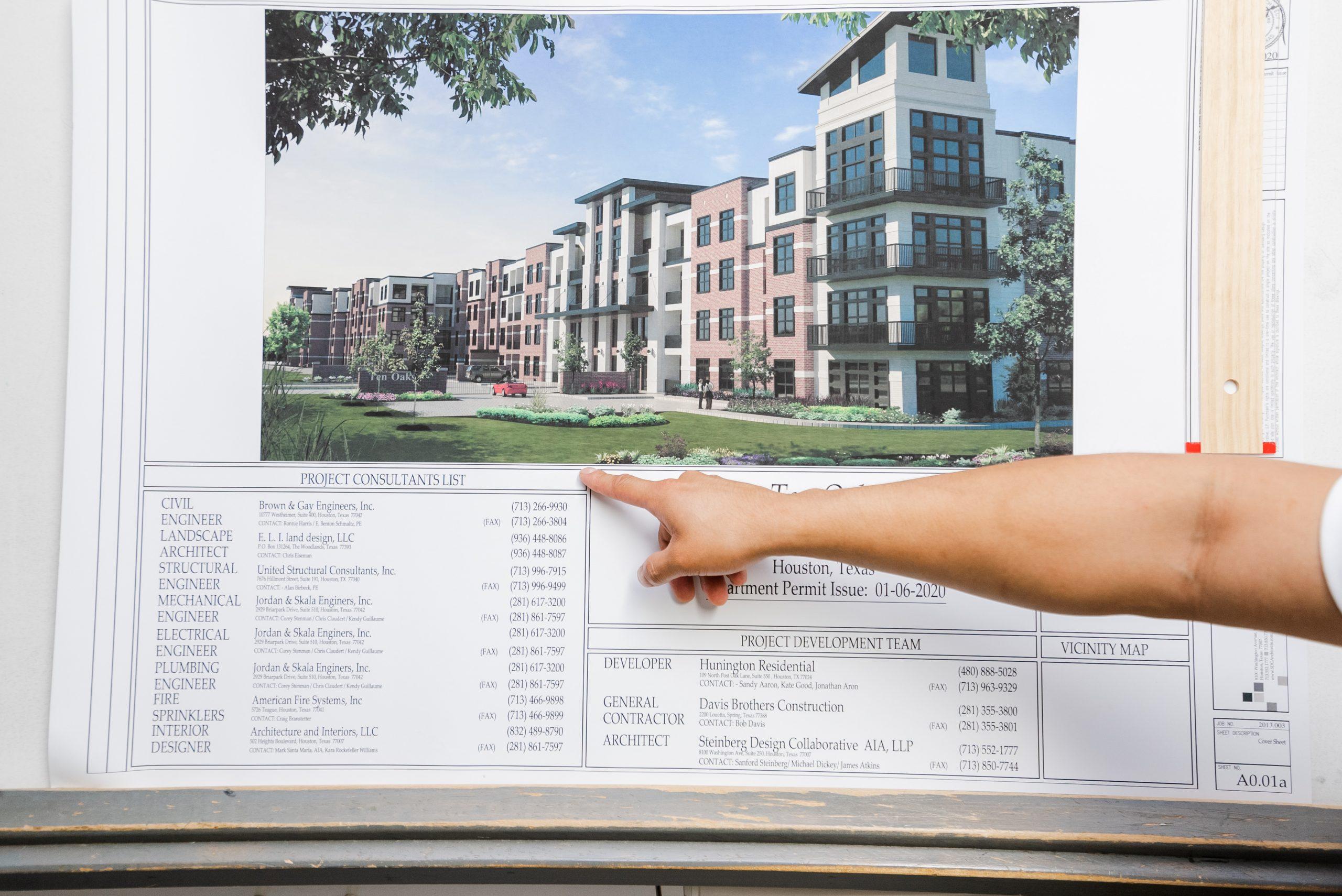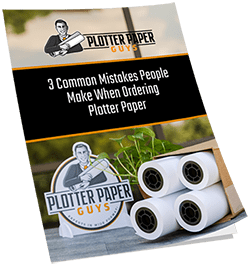Not all small businesses have large financial budgets to work with. It may surprise you to know that a recent US bank study finds that 82% of failed businesses struggled because of cash flow problems. Read on to find out how large format inkjet paper can help your business!
So how does a company save money to avoid failure? One tactic is investing in a wide-format printer, which means you can promote your brand without needing to outsource your large printing jobs to costly third parties.
But owning a large-format printer means you get a lot of options when it comes to paper rolls and printer ink. So how do you find the best one for your needs?
If the metrics of large format printing are confusing, keep reading as we demystify everything you need to know about large format inkjet paper rolls.
What is a Wide Format Printer?
A large (or wide) format printer is a printer that can print materials from 12 to more than 100 inches wide, which gives you the flexibility to produce many different kinds of marketing materials.
These printers are significantly more powerful than your traditional office printer and are designed especially for high-production output. A wide-format inkjet also prints quicker than a standard printer without compromising on quality, allowing you to complete a greater number of printing jobs in a day.
Why Use a Wide-Format Printer?
New inkjet technology is coming out all the time, allowing you to achieve results that were previously not possible. While the initial cost of a printer of this capacity can be rather hard on the budget, these versatile printers will quickly pay for themselves.
With large format printing, you are capable of producing:
- Banners and Signs
- Business Directories
- Vehicle Graphics/Wraps
- Packaging
- Wall Art
- Floor Displays
- T-shirts
Of course, you’re not only limited to that list, there are other uses where one needs large format paper. Aside from being versatile, there are further benefits to investing in a wide format printer.
Affordability: You can drastically cut down on printing costs if you bring your large-scale printing in-house.
Convenience: Having a large-scale printer in-house conveniently cuts back on the back and forth to the outsourced printer.
Immediate: By owning a wide-format inkjet printer, you no longer have to wait for printing jobs to be sent off; you can print them as immediately as you need.
High-Quality Images: Manufacturers design these printers with precision in mind and can produce the highest-quality results with vivid colors.
Versatile: These large-format printers can tackle a wide variety of jobs, allowing you to print exactly what you require.
Speed: These printers have a fast production speed, allowing you to complete more large-format printing jobs in a day than traditional printers.
All About Paper Rolls
What would a printer be without paper? Knowing your printer will be the first step in understanding what paper rolls to buy, as not all wide-format printers can use the same media.
A large format printer is typically designed for a specified purpose, so whether you use it to print CAD plans or print fine art and photography, you hopefully would have selected the printer based on your intended use. Now you will need to source the correct paper. For example, there are limitations to the width, length, and thickness of certain media, depending on your type of printer (Please Contact Us if you need help selecting a compatible product for your needs and printer type).
There are so many options available on the market today when it comes to paper rolls, so to help, we’ll address the specifications below.
What You Should Know About Printing Material
Before committing to paper rolls, knowing some key facts can help you get the most out of your inkjet paper.
Weight:
The weight of a paper can be measured in grams (gms), which is calculated by how much a square meter of the same would weigh. Not all printers can print on heavyweight or textured paper, so always comply with your printer’s specifications.
Lightweight paper begins at 80gsm, which is your standard, bright white photocopier paper, while heavyweight is from 200gms to 500gms.
Note: paper thickness and weight are not directly related.
Plotter paper rolls are displayed in pounds (lb) and measured in Basis Weight. “Basis Weight” refers to the weight of 500 sheets of paper before they are cut to the right size, i.e., “letter” size or “A4” size, which is defined as the weight of the paper before it is cut.
It gets a bit more complicated when it’s measured by “US Basis Weights,” which is something for another time.
Caliper or Thickness:
The thickness of large-format media can be measured in microns or millimeters (mm). In order to know which thickness of paper you need, refer to your printer’s specifications in the manual or online. Using the wrong caliper paper can:
- Result in printhead strikes
- Damage the paper
- Damage your printhead
- Cause the paper to feed incorrectly
Width:
Width is measured in inches or millimeters (mm), and popular roll widths for wide-format printers include 11, 17, 18, 22, 24, 30, 34, 36, and 42 inches. So naturally, your chosen paper roll has to fit your printer. For example, you won’t be able to fit a 36-inch paper roll into a 24-inch large-format inkjet printer.
Core Diameter:
The core diameter refers to the cardboard tube on which the paper rolls come. They come in both 2-inch and 3-inch, and in general, HP, Epson, and Canon large format printers all use 2″ core paper rolls.
This standard allows the rolls to fit a wide variety of inkjet printer models. Again, check your printer’s specifications, so you purchase the correct core size. You don’t want to buy a 3-inch roll if your printer can only take 2-inch rolls as it would be a waste of money.
Length:
The length is represented in yards or feet, and the higher the number, the greater the length of the bond papers. However, it’s essential to note that you need to pay attention to the overall diameter of the roll. Some longer rolls can’t fit into some wide-format printers as the core diameter is too large for the printer’s specifications.
Opacity:
The amount of light that can pass through the paper is the opacity. If you need a paper that can allow a lot of light to pass through, you will need to choose a paper roll with a low degree of opacity. Conversely, a higher degree allows less light through.
Brightness:
Whiteness and brightness are various ways of measuring light reflectance, with brightness representing how reflective the paper is. An optical brightening agent (OBA) is present on paper with a brightness greater than 100, for example.
Paper manufacturers calculate brightness by measuring light reflectance on a specific wavelength in the blue light spectrum.
Whiteness:
Similar to brightness; however, whiteness differs as it is measured over the full spectrum of wavelengths of light. It’s scaled from 0 to 100, where the higher the number, the whiter the paper is.
As with brightness, whiteness also may have OBAs in them, which would result in a rating greater than 100.
Which Paper Rolls for Which Printer?
Selecting the right paper is crucial to the outcome of your project, and below we’ll cover some of the most common large-format printing jobs into three main categories.
CAD:
CAD paper rolls come in two formats: coated and uncoated. Uncoated is less expensive and is ideal for jobs like simple black and white projects and linework drawings.
However, one should refrain from using uncoated when presentation-quality or color is required as it can only take low-density pigment inks. On the other hand, if you need a higher-quality print, then coated is best. This is because coated papers have an ink-receptive coating; they provide a higher quality print by preventing tiny droplets of dye or pigment ink from bleeding through the paper.
Mapping, Poster, Presentations & Plans:
Heavier jobs require heavyweight paper rolls, and for best results, you want the coated option for these prints. From 36lb coated paper for small projects like presentations and proposals to 46lb coated paper for posters and signs.
Fine Art & Photography
Photo paper rolls are suitable for fine art and photography prints, but are often less expensive than “fine art” papers.
Photographic and fine art papers are most typically available in three different finishes: Matte, Satin, and Gloss. Textured or smooth fine art papers are available with each different finish; however, the degree of texture may vary from one paper to another.
You’ll also want to consider whether you wish to purchase a roll or pre-cut sheets. Rolls tend to be more cost-effective, and you can print long print runs without interruption, whereas sheets have the advantage that they don’t curl and won’t need trimming.
We Have Solutions to Your Printing Problems
Now that you have a better understanding of large-format paper, you can see that investing in a wide-format inkjet printer can help elevate your business to the next level.
Owning a large-format printer affords you the ability to print on demand without time wasted, choose the ideal paper roll for the best quality results, and expand your brand by accessing marketing media you might not have used before.
We, the Plotter Paper Guys, have a wide range of large format media so that you can select the right one according to your price specifications. In addition, as a manufacturer, we can make almost any custom size and quantity. So get in touch with us, and we’ll supply you with the best, top-quality wide-format paper rolls.




